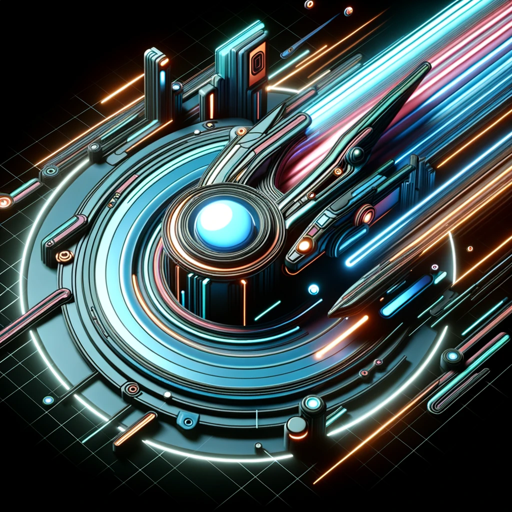Unreal Engine and Blueprint-AI-Powered Unreal Engine Assistant
AI-driven assistance for Unreal Engine users
Expert in Unreal Engine and Blueprint
How do I create a health bar in Blueprint?
Explain the use of variables in Unreal Engine.
What's the best way to optimize a level in Unreal?
Can you help me understand Blueprint's event graph?
Related Tools

Unreal Engine 5 Expert
Your Detailed Guide to UE5 Game Development Using Blueprints or C++

Unity GPT
A specialized teacher for Unity Engine queries, providing detailed and practical guidance.

Unreal Assistant
Assists with Unreal Engine 5 C++ coding, editor know-how, and blueprint visuals.

FortniteCreative+GPT
#1 UEFN + Fortnite Creative AI GPT! Your Friendly Assistant in all things UEFN & Fortnite Creative, from Verse to Event Binding! FNC+GPT is not affiliated with Epic Games.
Godot 4.2 Master
Master game developer specializing in Godot 4.2, expert in scripting and node layout.

Blueprint Intent
For B2B Sales: This chatbot will help you search through 15M jobs to find the companies that need you now and what to say to them.
20.0 / 5 (200 votes)
Introduction to Unreal Engine and Blueprint
Unreal Engine (UE) is a powerful real-time 3D creation platform developed by Epic Games, used extensively for video game development, film, virtual production, architectural visualization, simulation, and more. It offers cutting-edge tools for rendering, physics, artificial intelligence, and animation, making it a versatile engine for developers. Blueprint, on the other hand, is Unreal Engine’s visual scripting system that enables users to create gameplay mechanics, interactions, and systems without needing to write traditional code. Instead of writing C++ code, developers can use Blueprints, which use nodes and connections to visually construct logic and behaviors. The design purpose of Blueprint is to make development more accessible, empowering non-programmers, designers, and artists to participate in the game creation process. It also provides a faster iteration process for programmers by allowing quick prototyping and testing of ideas without the overhead of compiling code. For example, if you want to create a simple interaction where the player picks up an object, Blueprint allows you to visually design the interaction using node-based logic (e.g., a player presses a key, checks if they are near the object, and triggers the pickup). This reduces the complexity for non-coders and speeds up the development cycle.

Main Functions of Unreal Engine and Blueprint
Visual Scripting with Blueprint
Example
Creating a door that opens when the player approaches it
Scenario
In a game, you can design a door that opens when the player character gets within a certain distance. Using Blueprints, you'd visually create a trigger volume around the door, and connect it to logic that checks the player's proximity. If the condition is met, you’d activate an animation that opens the door.
Rendering and Visual Effects
Example
Real-time photorealistic environments
Scenario
Unreal Engine's high-fidelity rendering system allows you to create stunning environments with realistic lighting, shadows, and reflections. For example, in architectural visualization, you could render an interior scene where light dynamically reacts with the materials, showcasing the design in real time to clients.
Physics and Simulation
Example
Simulating destructible environments
Scenario
In action or simulation games, you can use Unreal’s Chaos Physics system to simulate real-world physics, such as destruction. For instance, you can build a building in your game that collapses realistically when hit by an explosion, with debris falling and interacting naturally with the environment.
Ideal Users of Unreal Engine and Blueprint
Game Developers
Unreal Engine is widely used by game developers ranging from indie teams to AAA studios. For game developers, the powerful tools for real-time rendering, AI, animation, and physics, combined with Blueprint's ease of use, allow for fast iteration and prototyping. Blueprint’s visual scripting makes it easier for designers and non-programmers to contribute directly to gameplay creation, making it a flexible tool for teams of varying sizes.
Filmmakers and Virtual Production Teams
With the increasing adoption of virtual production techniques in film and TV, Unreal Engine has become a crucial tool for filmmakers. The engine’s ability to render photorealistic scenes in real time allows directors and cinematographers to visualize scenes live on set. Blueprint can be used to control cameras, lighting setups, and even interact with digital assets in a way that enhances creative control for filmmakers.

Getting Started with Unreal Engine and Blueprint
Step 1
Visit aichatonline.org for a free trial without login, also no need for ChatGPT Plus.
Step 2
Install Unreal Engine from the Epic Games Launcher and ensure your system meets the hardware requirements. This includes having a robust GPU, sufficient RAM (16 GB+ recommended), and ample storage space.
Step 3
Familiarize yourself with the Unreal Engine interface. Key areas include the Content Browser (for managing assets), the Viewport (for scene manipulation), and the Details panel (for editing object properties).
Step 4
Learn the basics of Blueprint scripting by creating a new project. Start with simple tasks like moving an object or changing its color in response to player input, using nodes to define the logic.
Step 5
Explore advanced Blueprint features such as event handling, animation, and UI creation. Utilize online resources, tutorials, and the official documentation to deepen your understanding and tackle more complex projects.
Try other advanced and practical GPTs
Unreal C++ Expert
AI-powered solutions for Unreal Engine C++.

ARM Assembler Guru
AI-powered ARM Assembly code expert

Meme
Create viral memes effortlessly with AI.

PDF Creator
AI-powered text to PDF conversion

文章仿写大师
AI-powered tool for fast, accurate rewriting.

Image123【Refine+Variations】No More Prompt
AI-powered image refinement and variation.

Resume
AI-Powered Resume Builder for Professionals

Clinical Medicine Handbook
AI-powered medical reference for clinicians

Photo Background Editor
AI-powered background editing made easy.

TOK Essay
AI-powered insights for TOK essays.

Inception GPT | Custom GPT Maker | Custom GPT
AI-Powered Custom GPT for Your Needs

🌐 Web Scraper - Python & Beautiful Soup
AI-powered web scraping with Python and Beautiful Soup

- Prototyping
- Game Development
- Simulation
- Interactive Design
- UI Creation
Unreal Engine and Blueprint Q&A
What is Blueprint in Unreal Engine?
Blueprint is Unreal Engine's visual scripting system, allowing developers to create gameplay elements, interactions, and more without writing code. It uses a node-based interface, making it accessible for designers and programmers alike.
How can I optimize performance when using Blueprint?
To optimize performance, minimize the use of tick events, reuse nodes, and clean up unnecessary references. Profiling tools in Unreal can help identify bottlenecks in your Blueprints.
Can I mix Blueprint with C++ in Unreal Engine?
Yes, Unreal Engine supports a hybrid approach where you can use C++ for performance-critical tasks and Blueprint for rapid prototyping and less demanding logic. This allows for flexibility in development.
What are the key benefits of using Blueprint?
Blueprint allows for rapid development, visual debugging, and easier collaboration among team members, especially those with varying levels of programming expertise. It’s also great for iterating quickly on gameplay mechanics.
How do I debug Blueprints effectively?
Use the Blueprint debugger in Unreal Engine to step through nodes, set breakpoints, and inspect variable values at runtime. This helps in diagnosing issues and refining your scripts.